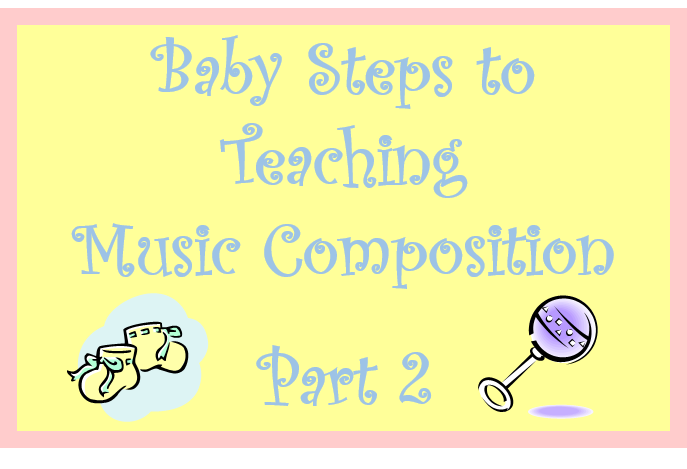These videos demonstrates VERY clearly how the size of the string and it's tuning affect the size of the sound wave created. Very cool!
Wednesday, February 25, 2015
Friday, February 20, 2015
Remarkable Farkle McBride - REMIX
I am dedicating this post to my friend Tami Boltz because she is one AMAZING music teacher and the information I am about to tell you absolutely made her week!!!
So there we were, a small group of music teachers from various schools in the district. We were sharing our TMEA discoveries and finds. One of the things that Tami showcased was the book "I've Got Two Dogs" by John Lithgow. In addition to sharing her love of reading/singing with her students, she was sharing with us about how this book offers an excellent opportunity for vocal exploration.

One thing led to another and before we knew it we were talking about the book "The Remarkable Farkle McBride"
Did you know that our favorite book "The Remarkable Farkle McBride" has a CD recording?
Well, it does!
It is called "Farkle and Friends" and it features a fully orchestrated retelling of the "The Remarkable Farkle McBride" narrated by John Lithgow. It's marvelous and we love it!
For a complete list of books by John Lithgow that are in my music library, please click HERE!
Plus, there is a new-ish book by John Lithgow that you can find here called "Never Play Music Right Next to the Zoo"

So there we were, a small group of music teachers from various schools in the district. We were sharing our TMEA discoveries and finds. One of the things that Tami showcased was the book "I've Got Two Dogs" by John Lithgow. In addition to sharing her love of reading/singing with her students, she was sharing with us about how this book offers an excellent opportunity for vocal exploration.
One thing led to another and before we knew it we were talking about the book "The Remarkable Farkle McBride"
Did you know that our favorite book "The Remarkable Farkle McBride" has a CD recording?
Well, it does!
It is called "Farkle and Friends" and it features a fully orchestrated retelling of the "The Remarkable Farkle McBride" narrated by John Lithgow. It's marvelous and we love it!
For a complete list of books by John Lithgow that are in my music library, please click HERE!
Plus, there is a new-ish book by John Lithgow that you can find here called "Never Play Music Right Next to the Zoo"
Tuesday, February 17, 2015
Melodysoup Video Wednesday! Robert Gupta - TED Talk
The keynote address at TMEA was absolutely stunning and beautiful and this is just a little bit of a taste of what was shared.... The TMEA talk was so much better and yet I have to share at least a little bit.
Sunday, February 1, 2015
Baby Steps to Teaching Music Composition - Part 2 FREE DOWNLOAD!
Based on my previous post, I am not ashamed to admit that I was thrilled when I was able to help my students travel through a composition process that got them to where they could create work that looked like this. However, when I consider this work I can see room for improvement in the lesson I present.
1. This composition is randomly rather than musically produced. At this point in the process only a few of my students demonstrate any notion that their piece should start or end on tonic. This happens because even though they have an instrument (the recorder) that they can use to hear their piece, it is not something they can use well because recorders are loud and they are composing in a room filled with other students also using the recorder to test out their compositions.
2. This composition has not been placed on the staff. When I first started taking students through the process of music composition, once my students were able to compose 16 beats of rhythm and then attach a pitch I would hand them some staff paper and hope for the best.... Well.... I didn't get the best... I caused frustration and then we would be out of time, and there wasn't really good way to move further through the process.
 In order to address the first problem I plan on including a mini lesson about the relationship between the scale degrees and the importance of ending on "do" . I also plan waiting for the full project until my students can play low d, low e and f sharp on the recorder so that we can compose in D Major pentatonic. If a particular class isn't ready to move that far on recorder, then I will have them create their compositions for xylophone in C Major.
In order to address the first problem I plan on including a mini lesson about the relationship between the scale degrees and the importance of ending on "do" . I also plan waiting for the full project until my students can play low d, low e and f sharp on the recorder so that we can compose in D Major pentatonic. If a particular class isn't ready to move that far on recorder, then I will have them create their compositions for xylophone in C Major.
To address the second problem, I plan is to invite my students to take their chart and transfer their work to the chart below that has a staff.
I plan on testing both charts and hope to report back here about which one had more success.
FREE DOWNLOAD! HERE!
Subscribe to:
Comments (Atom)










